
All categories
Featured selections
Trade Assurance
Buyer Central
Help Center
Get the app
Become a supplier

(13132 products available)














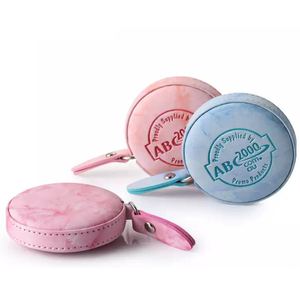
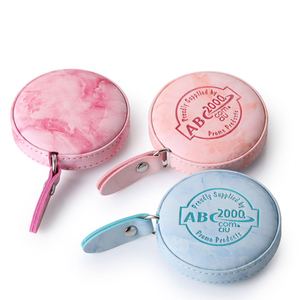
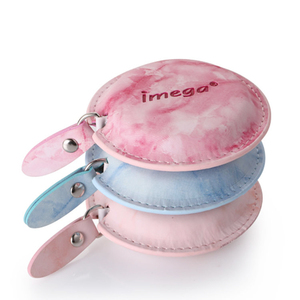
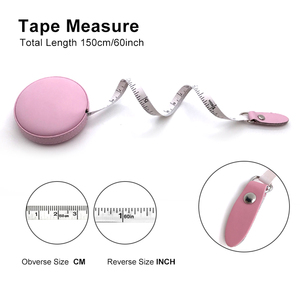
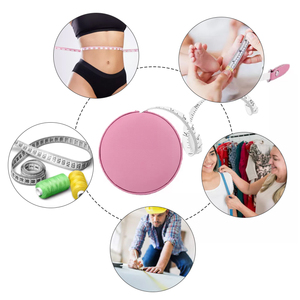

































The main purpose of a measuring cup with lid and handle is to measure out precise quantities of different types of ingredients. These measuring cups are important kitchen tools that assist with cooking, baking, and food preparation. They help ensure that the right amounts of ingredients are used, resulting in consistent and accurate cooking and baking results. Measuring cups are available in various sizes and shapes, with markings indicating volume measurements, making it easier for cooks to measure dry ingredients like flour, sugar, and salt, as well as liquid ingredients like water, milk, and oil.
Measuring cups are vital for cooks who follow recipes requiring specific quantities of various ingredients since they promote accuracy and consistency in cooking and baking. For example, when baking, precise measurements are particularly important because the balance between different ingredients can significantly affect the final product's texture, taste, and appearance. In addition to their primary function of measuring out ingredient quantities, measuring cups serve other purposes in the kitchen. Some have lids that allow users to store leftover ingredients without spilling or contamination. Others come with handles to provide a firm grip, making them easier to hold and pour.
Various types of measuring cups are available in the market today, each tailored to meet specific needs and preferences. From traditional metal sets to innovative silicone designs, these kitchen essentials come in different materials, shapes, and sizes to cater to every cook's requirements. Whether one is a professional chef or a casual home cook, measuring cups are designed to ensure accuracy in measuring ingredients, making cooking and baking more efficient and enjoyable.
Standard dry measuring cups
Standard dry measuring cups are a common type of measuring cup designed for measuring dry ingredients. These are usually made from metal or plastic and come in a set of nested cups of different sizes, such as 1/4 cup, 1/3 cup, 1/2 cup, and 1 cup. They have level tops so one can easily scrape off excess ingredients for accurate measurement.
Liquid measuring cups
Liquid measuring cups are specifically designed for measuring liquids like water, milk, and oil. They often have spouts for easy pouring and are usually made from glass or clear plastic. Liquid measuring cups typically have graduated markings on the side on an upward scale, making it easy to read the measurement from eye level.
Measuring cups with lids
Measuring cups with lids are useful for storing measured ingredients without spilling or contamination. They are great for meal prep or when one wants to keep their workspace organized. These measuring cups usually come in sets that stack together for convenient storage.
Measuring cups with handles
Measuring cups with handles are designed to provide a firm grip, making it easier to hold and pour. Handles make it easy to use, especially when measuring large quantities or heavy ingredients. They come in various materials, including metal, plastic, and silicone.
Silicone measuring cups
Silicone measuring cups are flexible and easy to use, with non-stick surfaces that allow for easy ingredient release. They can be used for both wet and dry ingredients and are safe for use in microwaves, ovens, and freezers. Silicone measuring cups are also dishwasher safe, making them convenient for everyday use.
Nesting measuring cups
Nesting measuring cups are a set of measuring cups that can be nested together for convenient storage. They usually come in sets of different sizes with various colors, making them easy to identify. Nesting measuring cups can be made from metal, plastic, or silicone and are great for saving space in the kitchen.
Measuring cups are important kitchen tools used to measure ingredients for cooking and baking. They come in different sizes, shapes, and designs to meet varying needs and preferences. Measuring cups with lids and handles are convenient for storing and carrying measured ingredients. They prevent spillage and allow easy pouring. This article will examine some of the popular designs of measuring cups with lids and handles.
Measuring cups with detachable handles are practical and space-saving. The handles can be removed for compact storage and reattached for use. These measuring cups are made of durable materials like plastic or stainless steel. They are designed to meet different measurement needs in cooking and baking. The detachable handles make it easy to carry the measuring cup, while the ability to detach them allows for convenient storage in places with limited space, such as tiny kitchens or for those who do not use measuring cups frequently.
Collapsible measuring cups are innovative kitchen tools that combine functionality and space-saving design. These measuring cups are designed with collapsible features, allowing them to be easily stored when not in use. The sidewalls of collapsible measuring cups can be folded inward, reducing their overall size and making them more convenient to keep in drawers or cabinets.
Silicone measuring cups are flexible and malleable kitchen utensils. They are designed to provide convenience and practicality. Silicone measuring cups have handles that make them easy to hold and pour. These cups are made of food-grade silicone and usually have a sturdy inner frame to maintain their shape. Silicone measuring cups are heat-resistant, so they can be used to measure both hot and cold liquids. Additionally, silicone measuring cups are dishwasher-safe, making cleaning them a breeze.
Stackable measuring cups are designed for convenience and efficient storage. They have a lid and an ergonomic handle. The stackable design allows these measuring cups to be placed one on top of the other without occupying too much space. This feature is especially useful for kitchens with limited storage space or for those who want to keep their measuring cups organized and easily accessible. Each cup has clear markings on its surface, indicating different measurement units such as milliliters (ml) and ounces (oz). These markings allow for accurate measuring when cooking or baking.
Here are some popular designs of measuring cups with lids and handles. Each design has unique features and advantages that cater to different preferences and needs. Whether it is the detachable handles, collapsible, silicone-made, or stackable design, these measuring cups offer practical solutions for measuring ingredients in the kitchen.
Measuring cups are essential tools in the kitchen used to measure ingredients accurately. They are made from different materials, including plastic, glass, and metal. Measuring cups are found in various sizes, typically ranging from 1/4 to 1 cup. They are marked with measurements in both metric and imperial units. The measuring cup with a lid and handle is a versatile tool in the kitchen. It is used for more than just measuring ingredients. This section will explore some common and creative uses of measuring cups. It will show how these cups can simplify cooking and baking. They will also demonstrate their usefulness beyond the kitchen.
One of the primary uses of measuring cups is to ensure accuracy in cooking and baking. In baking, where precision is critical, measuring cups can measure flour, sugar, and milk. For cooking, measuring cups can measure liquids like water, broth, or oil and solid ingredients like rice or pasta. With clear measurement markings, measuring cups help achieve the correct ingredient quantities, leading to consistently delicious results.
Measuring cups are used outside the kitchen. They are versatile tools that can be used in various ways. In gardening, measuring cups measure potting soil and fertilizer. They help apply the right amount of nutrients to plants. In crafts, measuring cups measure glue, paint, and other materials. They ensure that mixtures are consistent for quality results. In science experiments, measuring cups measure liquids and solids. They are great for conducting chemistry or physics projects. They provide accurate measurements for learning. Using measuring cups in these activities helps to measure things accurately. It applies the concept of measuring volume in different fields outside cooking and baking.
Measuring cups with lids are great for meal prep and storage. They hold and keep ingredients fresh. Here are some common applications. Prepping ingredients: Before cooking, one can measure out ingredients like rice, quinoa, or lentils. Then, store them in the measuring cup. This makes cooking more efficient. The measured ingredients are ready to use. Storing liquids: If one has leftover broth or sauce, one can pour it into the measuring cup. The lid will keep it fresh until the next use. Mixing small amounts of ingredients: One can use measuring cups to mix ingredients like salad dressings or marinade. Put the lid on and shake to combine everything well. Then, open the lid to use the dressing or marinade.
In choosing the right measuring cup with lid and handle, there is a need to consider certain features and benefits of the product. This will enable one to select the best option that meets specific requirements for cooking or baking purposes. It is important to look at material types when choosing a measuring cup. Opt for durable materials like plastic or glass that can withstand high temperatures without breaking easily. Also, consider transparency in measurement. One should go for cups that have clear markings on them, which indicate volume increments, thus making it easy to read measurements while working in the kitchen.
Another important aspect to consider is the presence of handles and lids on the measuring cups. Handles provide a convenient grip, especially when holding heavy liquids, so one should choose cups with sturdy handles that are comfortable to hold. On the other hand, lids serve the purpose of sealing contents within the cup, thus preventing spillage or contamination from external agents such as dust particles. It would be best if one looked at design features, including spouts and ergonomic handles. Spouts allow for controlled pouring, while ergonomic handles reduce strain on hands, making them comfortable to use over long periods.
Furthermore, one needs to consider capacity and accuracy when selecting measuring cups with lids and handles. One should ensure that different capacities are available to measure both small and large quantities of ingredients accurately, with each cup having its own scale imprinted on it. The versatility of measuring cups is also another factor worth considering during selection. One should go for those cups, which can be used for various purposes, such as liquid measurement, dry ingredient measurement, etc. Additionally, collapsible measuring cups can be easily stored due to space-saving qualities, thus making them ideal for people who have limited storage spaces in their kitchens.
Q1: Can one use measuring cups as storage?
A1: Yes, measuring cups can store ingredients like flour, sugar, etc. This makes them double as storage and measuring tools. Some measuring cups even have lids for storing measured ingredients or other foods. However, cups specifically designed with storage in mind will stack better in a pantry and keep things fresher.
Q2: Are measuring cups dishwasher safe?
A2: Most measuring cups can go through the dishwasher without damage. However, to maintain their condition and keep them working well for longer, it's best to hand wash wooden measuring cups and spoons.
Q3: Can one use measuring cups for anything else?
A3: Apart from measuring ingredients, one can use measuring cups for various purposes. These include:
Q4: How can one calibrate a measuring cup?
A4: To calibrate a measuring cup, one can use a scale to measure a known weight of water (1 gram per millimeter). Pour the water into the measuring cup and check if the volume matches. If not, make a note of the discrepancy and adjust your measurements accordingly.